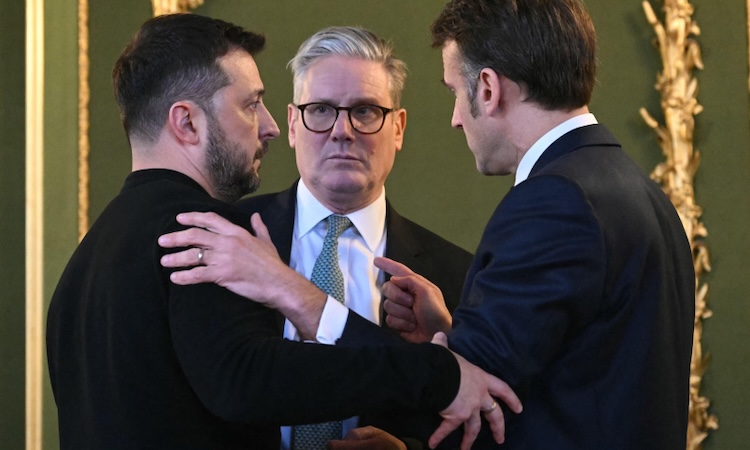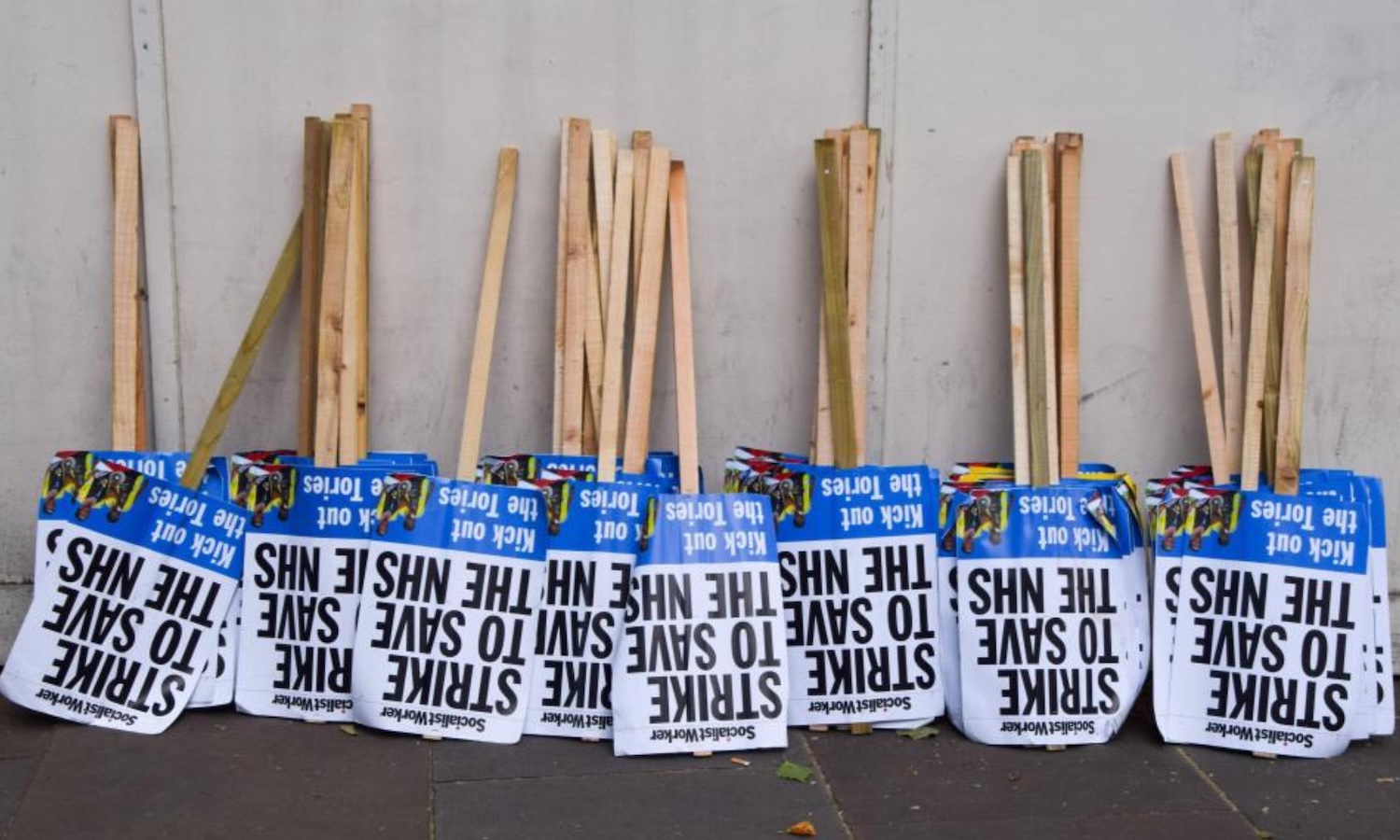In June, four months after the February general election, a coalition was finally able to form the new Irish government. This government is made up of what on the face of it appears to be an incongruous coalition between Ireland’s two traditional parties, Fine Gael (Gaelic Family) and Fianna Fáil (Soldiers of Destiny), and the Green party.
Meanwhile, Sinn Féin (We Ourselves), the all-Ireland republican party that won the largest number of first preference votes, was unceremoniously excluded.
The results in the general election were as follows:
“Ballot counts on Sunday [9 February] revealed that after all 39 constituencies across Ireland were tallied, Sinn Féin received 24.5 percent of the first preference vote, almost doubling its share from the last election in 2016.
“It outstripped the opposition Fiánna Fail party, which won 22.2 percent, as well as incumbent prime minister Leo Varadkar’s governing Fine Gael party’s 20.9 percent.” (Ireland: Sinn Féin wins popular vote, set for historic gains, Al Jazeera, 10 February 2020)
Sinn Féin’s performance is all the more remarkable in that, unlike Fianna Fáil and Fine Gael, it did not contest all seats available but ran a slate of a mere 42 candidates for the 159 seats contested.
It even secured most first preference votes in the constituency of the then prime minister, Leo Varadkar: “Sinn Féin topped the poll in [Leo Varadkar’s] multiseat constituency of Dublin West. He eventually won his seat back after the fifth round of counting, but it’s the first time a sitting taoiseach [prime minister] has failed to win the most votes on his own turf.” (Sinn Féin just upended Ireland’s status quo. What comes next? by Colm Quinn, Foreign Policy, 12 February 2020)
In terms of seats, Fine Gael, Fianna Fáil, and Sinn Féin secured 35, 38, and 37 seats, respectively. However, 80 seats are needed to form a majority in the Dáil (parliament). The only possible way to do this without the participation of Sinn Féin was by Fine Gael and Fianna Fáil entering into an unprecedented alliance, into which they had also to conscript the Green party’s 12 TDs (MPs).
A little history
This election ended the so-called ‘duopoly’ which has since the foundation of the Irish republic in 1922 seen Irish governments formed exclusively by either Fianna Fáil or Fine Gael (until 1933 known as Cumann na nGaedheal – Gaelic Society), both of which are today considered to be parties of the centre right – ie, equivalent to the British Tory party.
So alike are they on the political spectrum that they might as well have been a single party. They were two for historical reasons: Fine Gael was formed by those who accepted the terms of the treaty signed in London on 6 December 1921 that concluded the Irish War of Independence from Britain. It was signed on the Irish side by a team that included Michael Collins and Arthur Griffith and provided for the Irish free state to have its own parliament independent of Britain.
However, under the terms of the treaty, Ireland would have a status similar to Canada’s, with the British king remaining the head of state and parliamentary representatives having to swear an oath of allegiance. It also made provision for six of the counties in northern Ireland, which had a protestant majority, to opt out of the free state should they wish to do so – an option that in due course they exercised.
There were other concessions also made to Britain, but on balance a majority of Irish people felt the terms should be accepted, and Ireland’s unofficial dáil approved the treaty on 7 January 1922, after nine days of public debate, by a vote of 64 to 57.
This, however, led the opponents of the treaty to split, with those who eventually formed Fine Gael supporting the treaty, while those opposed to it went on to form Fianna Fáil, refusing to take the oath of allegiance or to take seats in the treaty dáil.
The general election that followed on 16 June 1922 gauged the attitude of the electorate towards the treaty compromise. The results were: Sinn Féin 58 pro-treaty TDs, Sinn Féin 36 anti-treaty TDs, Labour 17 TDs and others 17 TDs.
The anti-treaty Sinn Féin faction refused to accept this result and on 28 June 1922 a civil war ensued. Sinn Féin split. Eamon de Valera had already formed an anti-treaty faction, Cumann an Poblachta, the predecessor of Fianna Fáil. The pro-treaty faction formed Cumann na nGaedheal, the precursor of Fine Gael.
The result was deadly enmity arising between the two sides. By the early 1930s, however, Fianna Fáil had found a formula that enabled it to participate in the Dáil and the duopoly was established.
The Greens
The strategy of both Fine Gael and Fianna Fáil governments over the last several years has been to attract overseas investors to set up shop in Ireland by offering them a host of privileges, low taxes in particular.
Low taxes, of course, mean lower government income and reduced public services. As a result, healthcare and housing have been very hard hit, thereby much angering the Irish working class, which has as usual borne the brunt of the cuts.
The Green party, despite its ‘left’ veneer, has lost credibility as a result of the fact that: “From 2007 to 2011, as junior partners in a coalition government with Fianna Fáil, the Greens were complicit in introducing billions of euros of cuts to health, education, and other social services to bail out banks and protect the wealth of the super-rich.” (Ireland’s Greens agree to join austerity coalition government by Dermot Quinn, wsws, 1 July 2020)
There is no reason to suppose that the Greens will behave any differently in the present government. Although there are government posts on offer to Green leaders, there is nothing for ordinary well-meaning members of the Green party to gain from their party forming part of the government, so in fact they had to be duped in order to secure the necessary two-thirds majority needed to agree to this participation.
They were told that by participating they would secure a government commitment to securing an average annual 7 percent reduction in emissions over the next decade. However, John Reynolds and Colin Coulter of The Jacobin exposed the hollowness of this commitment as a crude léger de main:
“A Fine Gael-led government signed up to the 2015 Paris climate agreement, which requires at least 7.6 percent annual emissions cuts, with an onus on rich countries to strive for cuts closer to 10 percent. But Fine Gael itself targeted much lower reductions in its climate-action plans, in practice coming ‘nowhere near’ even those less ambitious benchmarks.
“The Greens made a 7 percent annual reduction their ‘red-line’ issue in the talks. Media coverage has almost uniformly presented this as a hard-line, maximalist demand, rather than a figure that is slightly below the minimum requirement to which the state had already committed itself. Fine Gael proposed an even lower percentage: one of the party’s leading figures suggested that the Green party could ‘forget its 7 percent carbon emission reduction demand if it decimates farming and rural Ireland’.
“The fudge ultimately engineered to keep the Greens on board was a pledge to commit Ireland to 7 percent annual carbon reductions on average between now and 2030. This essentially backloads meaningful action until the second half of the decade, well after this government’s lifetime will have expired. Fine Gael has admitted as much, with Varadkar making it clear that ‘most of the reductions will happen in the second five years’.” (Ireland’s new government just puts a green face on the old order, 1 July 2020)
Sinn Féin
Sinn Féin was the only party to reflect the longing of the Irish people to put an end to austerity and the country’s 26 percent unemployment rate. This is what explains its electoral success, which would obviously have been far more crushing if it had stood candidates in every constituency.
Its election manifesto was replete with promises to improve the living standards of working people: abolishing tax on incomes under €30,000 a year, making GP visits free, restoring the pension age to 65 instead of 67, more spending on schools, the building of 100,000 new council homes over the next five years, increasing the number of hospital beds, and taking steps to progress the reunification of Ireland – to name but a few of its most welcome provisions.
The Sinn Féin manifesto also included a commitment to ending “Ireland’s involvement in the EU’s Permanent Structured Cooperation, which it sees as a precursor to a European Union army, as well as ending membership in Nato’s Partnership for Peace. It also proposed taking its anti-militarism a step further by holding a referendum on writing Ireland’s historical practice of neutrality into the Irish constitution.” (Foreign Policy, op cit)
Clearly these are not measures acceptable to the Irish or the international ruling classes.
That being the case, the most important thing was to dragoon Fine Gael and Fianna Fáil into forgetting their time-honoured enmity, despite it having for decades served to disguise the fact that in elections the Irish electorate were actually getting only a choice between one centre-right bourgeois party and another, the better to bamboozle voters into thinking they had a free choice.
That little party trick has now had to be abandoned, and Ireland’s ruling class will be weaker as a result.
What lies ahead
Sinn Féin’s deputy dáil leader Pearse Doherty correctly remarked regarding the new government that the “two old parties” had “circled the wagons” to exclude Sinn Féin “and they are using the Green party as a fig leaf to do this …
“At a time when Ireland needs ambition and big ideas, we have a programme for government that fails to deliver on affordable housing, on building up capacity in our health services, on getting people back to work and having enough to survive, on childcare, on the right to retire at sixty-five and on planning for Irish unity.”
However, in opposition, representing the heartfelt desires of the majority of Irish people, especially the young, Sinn Féin may well be in a strong position to consolidate its support amongst the Irish people, something the bourgeoisie considers most undesirable, but has had to accept as a necessary risk:
“The rise of Sinn Féin has scrambled the calculations for all the parties. While they do not want to form a coalition with it … they also worry that leaving it alone in the opposition will enable it to pick off even more voters, at their expense.
“Sinn Féin, analysts said, would benefit by staying in the opposition, since it could exploit the difficult decisions that the new government will have to make.” (Ireland’s two main parties to jointly govern for the first time by Mark Landler, New York Times, 15 June 2020)
And indeed, Pearse Doherty has vowed: “Fianna Fáil and Fine Gael will be faced with the most determined opposition they have ever seen because Sinn Féin will stand up for ordinary workers and families.”
With a new taoiseach appointed (Fianna Fáil bigwig Micheál Martin, who will swap places with Leo Varadkar of Fine Gael in 2022), the new government is already showing its reactionary hand. In spite of the fact that exit polls following the election in February indicated that 57 percent of Irish voters support a border poll on Irish unity, and despite the fact that northern Ireland is now represented in the British parliament by more nationalist MPs than unionist ones for the first time in its history, the taoiseach has ruled out a referendum on a united Ireland in the near future, saying it would be “far too divisive at this stage”.
As the coronavirus pandemic and the 2020 economic crash wreak their inevitable destruction on the living standards and prospects of Ireland’s working masses, the future looks anything but secure for the country’s rulers. One thing, however, looks certain: the rise of Sinn Féin will not be stopped any time soon.















